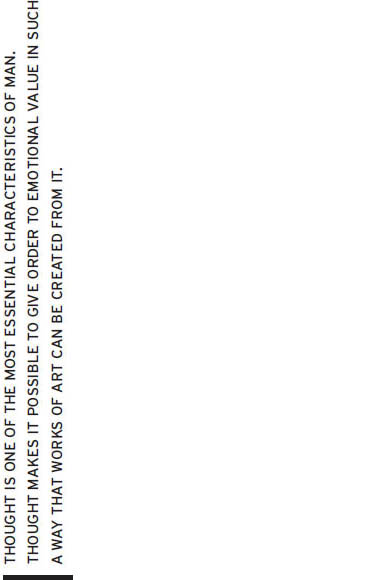STRUCTURE AS ART? ART AS STRUCTURE?
MAX BILL | 1965
One can consider art to be essentially identifiable as invention. The invention of means of expression; the first thrust into realms that contain as yet unknown aesthetic and formal possibilities.
That is the sense in which art presupposes something novel. The newness of the idea, newness of the themes, newness of the form. This kind of newness can be achieved in two ways: (a) in an individual way—that has its origin in the intellectual and psychological makeup of the artist; (b) in a more general way—that bases itself on experimenting with objective possibilities of form. In an extreme case (a) will lead to “art informel” or to a neo-Dadaistic combination of materials; (b) leads to structure. On the one hand: materials in their “natural” condition, individually interpreted. On the other: tectonic laws that ultimately are schematically applied in a uniform distribution.
Even though amorphous material can be considered to possess an inner configuration—a structure of its own—in its natural condition, we can eliminate this kind of structure from our consideration, for as an inherent structure it is not accessible to aesthetic or visual arguments, either in painting or in sculpture.
Tectonic laws are altogether different. They are accessible to aesthetic arguments for they are principally laws of order, and in the end art = order. In other words, art is neither a surrogate for nature, nor for individuality, nor for spontaneity. And where it appears as such, it is art only insofar as it informs the surrogate with order and form. Because order is so characteristic of art, art begins to rely for order on the tectonic laws.
Now the question arises as to what a tectonic law, a law of order, as we know it in science, means with respect to art. That is, where does structure end and art begin?
Let us start with the extreme case: a plane is covered with a uniform distribution in the sense in which this is understood in statistics; or a uniform network extends into space. This is an order that could be uniformly extended without end. Such an order we here call a structure. In a work of art, however, this structure has its limits, either in space or on the plane. Here we have the basis for an aesthetic argument in the sense that a choice has to be made: the possible, aesthetically feasible extension of the structure. Actually it is only through this choice to limit the arbitrarily extensible structure on the basis of verifiable arguments that a discernible principle of order becomes comprehensible.
But is a choice, or the setting of limits, sufficient for the creation of a work of art? This question arises mainly because, since the radical attempt to dispense with all individualistic stylistic expression beginning with [Piet] Mondrian, no reduction can be extreme enough. This also arises because the aesthetic information offered by the means of expression is dwindling sharply: neither locatable nor measurable, neither expressing nor indicating an order: producing a neuter with aesthetic pretensions. The aesthetic quality is beginning to withdraw into the most extreme reductions, into the most extreme objectivity, culminating ultimately in the negation of newness and of invention.
But invention always presupposes the discovery of new problems. The discovery of these new problems is individually determined. Art is unthinkable without the effort of the individual. Order on the other hand is impossible without an objectifying structure.

MAX BILL
“Die mathematische Denkweise in der Kunst unserer Zeit” 1949
This means that art can originate only when and because individual expression and personal invention subsume themselves under the principle of order of the structure and derive from it a new lawfulness and new formal possibilities.
Such lawfulness and such inventions manifest themselves as rhythm in an individual case. Rhythm transforms the structure into form; i.e., the special form of a work of art grows out of the general structure by means of a rhythmic order.